The 2020 Chevy Bolt EV will soon be available. Overall, the changes appear to be modest, but GM did announce that the 2020 Bolt EV would see a 20-mile range increase with what appears to be different battery chemistry. One of the few remaining questions is what its DC fast charging rate will be. In this article, I will explore the possible charging rates we can expect, and how those rates will affect the 2020 Bolt EV's drivability and use cases.
First, I must emphasize that despite being a critical metric used to assess electric vehicles, these DC fast charging rates aren't actually all that important. More than 90% of a typical person's charging will be done at home or work (while they sleep or do other, more productive things), and even on the rare occasions when an EV owner takes a long trip, charging sessions typically coincide with bathroom, meal, or shopping breaks.
However, that being said, DC fast charging rates can be important. For those who regularly drive more than 400 to 500 miles in a single day, slower DC fast charging rates can add significant time to those trips. While the 40 minutes to 1 hour most EVs take to charge up to 80% is acceptable for one stop on an 8 to 10 hour drive, most drivers would expect any additional stops to take significantly less time. Even for an efficient car like the Bolt EV, 100 to 150 kW charging would be the minimum charging speed required to make a 15 to 20 minute charging stop productive.
Previous Chevy Bolt EV Charging Rates
Before diving into what the 2020 Bolt EV's DC charging rate will be, let's establish the charging rate for the 2017-2019 Bolt EV.
GM was conservative when setting the charge rate for the Bolt EV, and its peak charging rate is actually less than 1 C (a rate that would take 1 hour to recharge the battery from empty to full -- 60 kW in the case of the Bolt EV's 60 kWh battery). Other automakers who use similar battery cells (such as Hyundai, Jaguar, and Kia) have pushed their peak charging rates to 1.1 C.
Likewise, GM was conservative with the Bolt EV's charging taper. The charging profiles for these batteries have "step downs." Essentially, when the battery reaches a certain state of charge (percentage), the charging rate will drop dramatically, and the battery will continue to charge at roughly that rate until the next step down. The Bolt EV's step downs appear to vary based on battery temperature, and from what I've observed, the first step down occurs at between 46% and 55%. Cars like the Hyundai Kona Electric and Kia Niro EV appear to more consistently maintain the 55% initial step down.
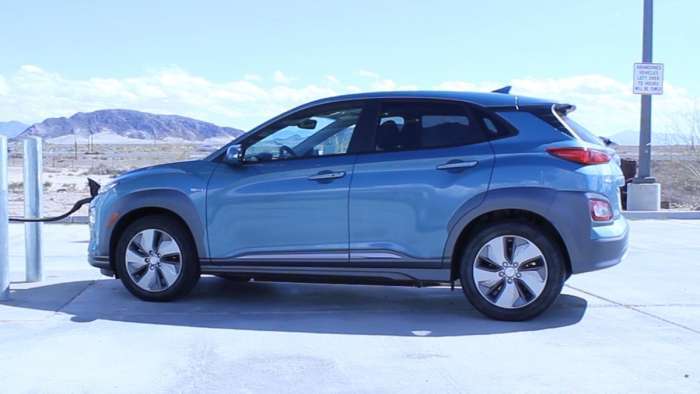
On a basic level, the charging rate of an EV is a product of the voltage and current (amperage). The charging rate itself is measured in kilowatts (kW), though some automakers (such as Tesla) prefer to convert the charging rate to miles of range added per hour of charging (mi/hr) by factoring in the efficiency of the car. As the Bolt EV charges, the voltage constantly increases, and the charging current stays flat until it steps down. The following is the 2017 Chevy Bolt EV's charging currents and rates (in both kW and mi/hr) based on battery percentage:
0%-55%*: 150 A, up to 56** kW (222 mi/hr) peak
55%-70%: 105 A, up to 40 kW (158 mi/hr)
70%-85%: 65 A, up to 25 kW (99 mi/hr)
85%-95%: 40 A, up to 15 kW (60 mi/hr)
* I've observed 55% under ideal battery temperatures; however, 51% battery is the most common step down point.
** Some have reported 60 kW (238 mi/hr) peak charging rates out of newer Bolt EVs, but I have not been able to corroborate that.
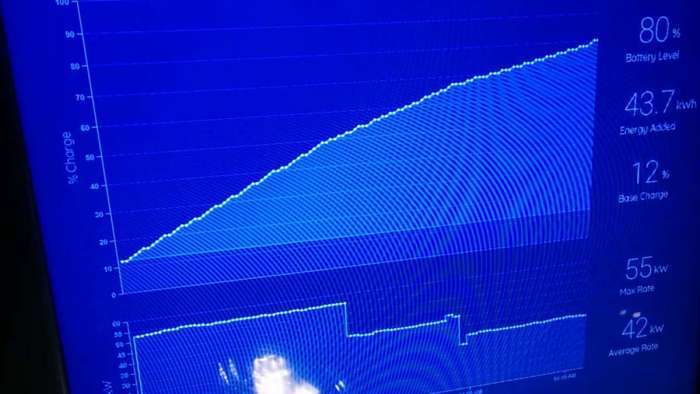
Now that we've established the previous Bolt EV's charging rate, let's look at what the possible charging rates for the 2020 Bolt EV will be.
"90 Miles in 30 Minutes"
When GM published the press release for the 2020 Bolt EV, some information was not updated from the previous models, and that included a reference to the DC fast charging rate being “90 miles in 30 minutes.”
Some have interpreted that to mean that the 2020 Bolt EV will have exactly the same DC fast charging as previous Bolt EV models. In other words, the 2020 Bolt EV would have a peak charging rate of 56 kW (222 mi/hr) despite having a newer, larger battery. I don’t agree with this assertion for several reasons.
First, the “90 miles in 30 minutes” is a far too generic term used by multiple automakers. Nissan also used that to describe the charging rate of their LEAF e-Plus, which has been verified to charge at over 70 kW and may even be able to charge at 100 kW.
Second, while GM is conservative, they are not that conservative. They were already over protective of the 2017 to 2019 Bolt EV batteries, so why would they be even more protective of the newer battery? Also, GM has shown that they are highly receptive to customer feedback, and the Bolt EV’s charging rate has been one of its main criticisms.
Third, the “90 miles in 30 minutes” aligns too conveniently with the charging rates for what are still the most commonly deployed public DC fast chargers (50 kW, 125 A units). I think that it is far more likely that GM is fully aware that those slower, 50 kW units are the chargers their customers are still the most likely to encounter. In other words, that marketing copy is simply meant to set minimum expectations.
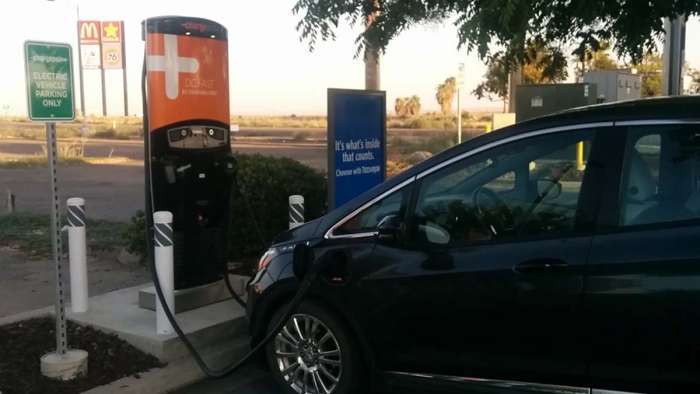
If this prediction does, however, end up being correct, not much changes for Bolt EV owners. On long-distance trips, the only differences will be that the 2020 Bolt EV will hold particular charging rates for longer and will be able to travel farther between charging stops (i.e., fewer stops overall). For instance, on my regular 1,000-mile trip that currently requires three charging stops each direction, the 2020 Bolt EV might only require two.
One odd advantage of this prediction being true is that, if Electrify America’s pricing structure remains the same, they will continue to be the cheapest public fast charging option available for Bolt EV owners.
Similar Charging Rate to Previous Chevy Bolt EVs
Personally, I think the minimum expectation for the 2020 Bolt EV is that it maintains the same 1 C rate as previous Bolt EVs; however, a “C-rate” scales with the size of the battery. In other words, a 1 C rate on a 60 kWh battery is 60 kW (238 mi/hr), but on a 66 kWh battery, it would be 66 kW (262 mi/hr).
If this were the case, using the previous Bolt EV’s taper points as a reference, the 2020 Bolt EV’s charging rate would look something like the following:
0%-55%: 180 A, up to 66 kW (262 mi/hr) peak
55%-70%: 125 A, up to 45 kW (178 mi/hr)
70%-85%: 75 A, up to 28 kW (110 mi/hr)
85%-95%: 45 A, up to 17 kW (67 mi/hr)
These aren’t necessarily impressive speeds by modern standards. They are slower than both the Hyundai Kona Electric and Kia Niro EV (the Chevy Bolt EV’s key competitors); however, these are still reasonable charging rates.
If this prediction turns out to be true, the biggest benefit for 2020 Bolt EV owners is that they will be able to maximize the most common public chargers (50 kW) up to 70% battery. Previous Bolt EV models would not maximize these chargers after 55% unless the Bolt EV was also drawing power for battery conditioning or climate control systems. Also, if Electrify America maintains their current pricing structure, they would be even cheaper to use with the 2020 Bolt EV because its peak charging rate would keep it in Electrify America’s lowest pricing tier.
Similar to Mercedes EQC
One possibility I want to share is that the 2020 Chevy Bolt EV’s charging rate might look similar to the new Mercedes EQC (an all-electric SUV). The EQC appears to be using a newer battery that is different than what has been deployed in the previous Chevy Bolt EVs, Hyundai Kona Electric, Jaguar I-PACE, or Kia Niro EV; however, the battery appears to be sourced from suppliers such as LG Chem and SK Innovation. If so, it could be very similar to the new battery in the 2020 Chevy Bolt EV.
The EQC has a unique charging profile compared to its competitors (such as the Audi e-Tron and Jaguar I-PACE), and it will charge at close to its full rate until nearly 80% (though not at the same rate as the e-Tron). Bjorn Nyland provided a very good charging rate comparison for the EQC in this video.
Mercedes has been quite about the full battery size of the EQC (they’ve only provided the usable capacity of 80 kWh), so that makes things a bit harder to calculate. On the surface, it appears that the EQC is charging at nearly a 1.4 C rate; however, if the gross capacity of the batter was actually 90 kWh (a more likely figure), the charging rate would only be 1.2 C.
If the 2020 Bolt EV is using a similar type of battery and we translate that charging rate, its 66 kWh battery would see an 80 kW (317 mi/hr) charging rate from 0% to 70% before starting to taper. That also means that, on the faster public DC chargers, the 2020 Bolt EV would be able to charge to 70% in about 35 minutes, and charging to 80% shouldn’t take more than 40 to 45 minutes.
Suffice to say, this type of charging rate would have a huge impact on the drivability of the 2020 Chevy Bolt EV. On long trips, it would cut the time spent charging in half compared to current Bolt EV models, and it would actually make the 2020 Bolt EV far better on long trips than the Hyundai Kona Electric and Kia Niro EV. The peak charging rates wouldn’t be that different (80 kW in the Bolt EV versus 75 kW in the Kona and Niro), but being able to maintain peak charging rates up to 70% (versus 55% in the Kona and Niro) would save time and reduce the overall number of charging stops.
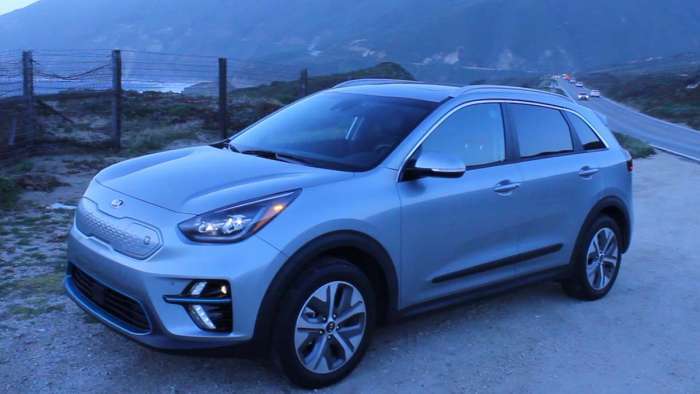
The problem with this prediction, however, is that if Electrify America maintains their current pricing structure, 2020 Bolt EV owners would be paying $0.50 a minute or about $17 to go from 0% to 70% battery. That’s about 9 cents per mile or about the same as a 35 mpg internal combustion car on $3 a gallon gasoline.
Faster Than the Tesla Model 3 SR/SR+
Now I know that I also just agreed that GM was conservative with the Bolt EV’s charging rates, but I must point out that GM isn’t always conservative. Sometimes they push the envelope, and one of the best examples of that was the Chevy Spark EV. Despite having a battery that was less than 20 kWh, it can charge at near the same speeds as the Bolt EV, giving the Spark EV an impressive 2.8 C charging rate.
While I don’t expect anything close to that C rate in the 2020 Bolt EV, I do think it’s worth entertaining the possibility that GM pushes it a little. When they released the Bolt EV in 2016, it literally had no competition other than a PowerPoint slide Tesla was projecting on the wall about an affordable EV available sometime in the future. In the three years since, the competitive landscape has changed.
In the affordable EV segment, the Bolt EV now has to compete against Hyundai and Kia (both producing EVs that can charge at 75 kW); Tesla (now selling an affordable Model 3 that can charge at 100 kW); and VW (announcing their ID lineup with 125 kW charging). GM cannot afford to release another EV with such a conservative charging profile.
Plus, GM was very clear that part of their decision about the Bolt EV’s charging rate was based on the public chargers available at the time. Well, now we have multiple public charging providers deploying 100 kW and faster charging units. There’s really no excuse to be conservative anymore.
While I would consider this a bit of pie in the sky, I think it’s possible that we could see GM double the charging current for the 2020 Chevy Bolt EV. Now, keep in mind that doubling the current for the larger 66 kWh battery doesn’t double the C rate. In fact, the 150 A charging current in my 2017 Bolt EV is actually a little under 1 C, so doubling that charging current to 300 A would only result in a 1.6 to 1.7 C charging rate, which is actually very similar to the charging rate in the Nissan LEAF e-Plus.
If GM did double the charging rate, which would probably require them to preserve the step downs, the 2020 Bolt EV’s charging rate would look something like the following (using the previous Bolt EV’s taper points as a reference):
0%-55%: 300 A, up to 111 kW (440 mi/hr) peak
55%-70%: 210 A, up to 80 kW (317 mi/hr)
70%-85%: 130 A, up to 50 kW (198 mi/hr)
85%-95%: 80 A, up to 30 kW (119 mi/hr)
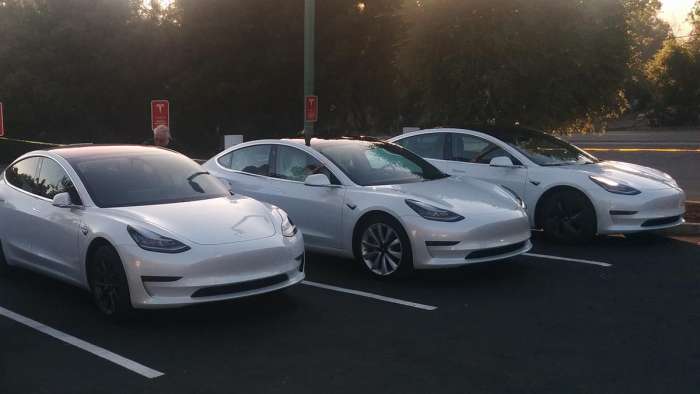
Personally, I think this charging profile is a bit too optimistic, but I could see some variation of it (perhaps within about 10%). Regardless, if this prediction is correct, it should go without saying that it would radically change the drivability of the 2020 Chevy Bolt EV. In fact, Bolt EV would be the fastest traveling affordable EV by a country mile, easily outpacing the Tesla Model 3 SR/SR+ on long distance trips.
In addition to more than cutting the current Bolt EV’s charging times in half on longer trips, it would also be affordable on Electrify America’s current pricing plan. Yes, it would be in their second pricing tier of $0.50/min, but because charging up to 55% battery would take only 20 minutes, it would only cost about 7 cents a mile (similar to a 45 mpg internal combustion car on $3 a gallon gasoline).
Conclusion
These are only predictions for now, so I’d love to hear what you are predicting. Hopefully, I will get my hands on a 2020 Chevy Bolt EV for real-world testing soon, so we can all see just how significant this battery improvement is.
See you next time when I assess the viability of solar panels on electric vehicles like the Chevy Bolt EV!
About The Author
Eric Way focuses on reporting expert opinion on GM brand electric vehicles at Torque News. Eric is also an instructional designer and technical writer with more than 15 years of writing experience. He also hosts the News Coulomb video blog, which focuses on electric vehicles, charging infrastructure, and renewable energy. Eric is an active member of the EV Advocates of Ventura County, a volunteer organization focused on increasing the widespread adoption of electric vehicles. You can follow Eric on News Coulomb Youtube, on Facebook at @NewsCoulomb as well as on Twitter at @eway1978.



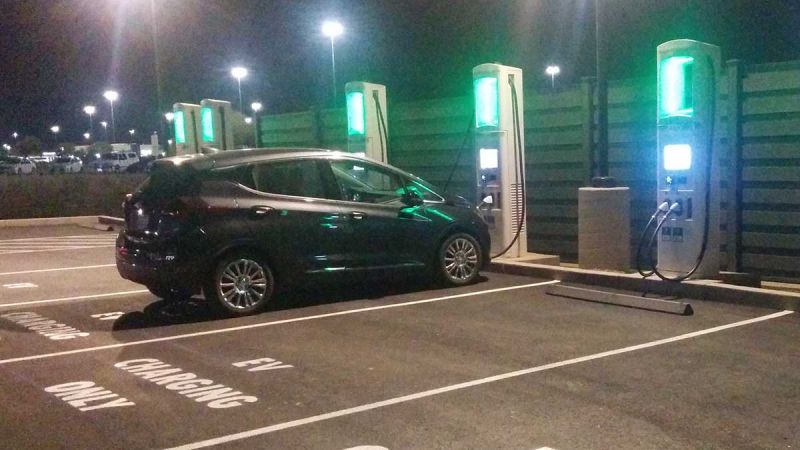





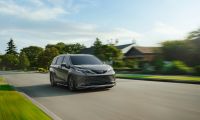

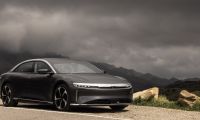

Comments
I believe the Tesla Model 3
Permalink
I believe the Tesla Model 3 can charge as high as 250 kW, not 100?
No, not the SR/SR+. They are
Permalink
In reply to I believe the Tesla Model 3 by frnkblk (not verified)
No, not the SR/SR+. They are capped at just over 100 kW. https://teslamotorsclub.com/tmc/threads/sr-at-lv-supercharger-v3.160269/
Interesting theories -
Permalink
Interesting theories - however I doubt that they're correct.
Upping the current requires more than just a small battery change - it'll require rewiring and better cooling.
I suspect that the 150A limit is fixed, we might be able to stay at 150A for longer, and the step-downs may be higher, but I doubt it will exceed 150A.
The battery would need better cooling - they could accomplish this by adding a second cooling plate to the top of the modules, and put aluminum fins between each cell (instead of every other cell), and increase the cooling capacity by probably 3-4x, enabling faster charging, but that's a pretty decent modification to a battery design that they're only planning on keeping around for another few years at best.
Also, current charging limits are 150,100,60,40,25A - at least from all the data that I have collected.
I'd also love to see a better battery heater, but I suspect that the cooling setup is probably the limit - even if they put a bigger heater, it wouldn't be able to transfer the heat to the battery much quicker than it does now.
Having battery charging pre-conditioning would be amazing and trivially simple to implement.
You could be right about the
Permalink
In reply to Interesting theories - by Sean Graham (not verified)
You could be right about the 150 A cap based on a recent Electrek tweet; however, it looks like the batteries on their 2020 Bolt EVs could have been cold-soaked. GM engineers have stated multiple times that they could have set the charging rate on the 60 kWh Bolt EV battery higher, but they chose not to (partially based on the limitations of the public charging infrastructure at the time).
Frankly, I don't buy the cooling argument. From everything I've seen, the 1 C limitation (set by the factory) on the Bolt EV's 60 Ah cells is due to electrode thickness. The Hyundai Kona Electric and Kia Niro EV don't have significantly better cooling systems, yet they are able to push the charging rate on their nearly identical cells to 1.1 C.
As for the charging limits, how were you gathering that information? And what year/release date Bolt EV were you tracking? My Bolt EV is the first release battery (I believe all Bolt EVs built after 2016 have a different battery), and both my Torque Pro readings and information displays on BTC Power chargers show 105 A after the initial step down.
Now that the 2020 bolt is out
Permalink
In reply to You could be right about the by Eric Way
Now that the 2020 bolt is out, this article could be updated. We didn’t get what we had hoped for. Could a software update improve the charging curve? ...not OTA obviously.